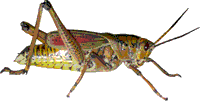Entomology Collections, General

Entomology Papers from Other Sources
Document Type
Article
Date of this Version
2009
Abstract
The sugarbeet root maggot Tetanops myopaeformis (Röder) overwinters as a freeze-tolerant third-instar larva. Although most larvae are considered to overwinter for only 1 year, some may exhibit prolonged diapause in the field. In the laboratory, they can live for over 5 years using a combination of diapause and post-diapause quiescence. In the present study, the cold survival strategies of these larvae during storage is investigated by measuring their supercooling points in combination with survival data. Supercooling points (SCPs) change significantly during storage, highlighted by a marked increase in the range of SCPs recorded, although the ability to tolerate freezing is not affected. Additionally, a freezing event ‘refocuses’ the SCPs of aged larvae to levels similar to those seen at diapause initiation. This change in SCPs is dependant not only on the initial freezing event, but also on the parameters of the incubation period between freezing events. Finally, the temperatures of larval overwintering microhabitats are monitored during the 2007 – 2008 boreal winter. The results indicate that, although overwintering larva are physiologically freeze-tolerant, they may essentially be freeze avoidant during overwintering via microhabitat selection.


Comments
Published in Physiological Entomology (2009) 34, 224–230.